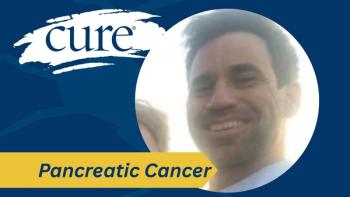
HPV-Related Head and Neck Cancer May Have Two Distinct Subtypes
Researchers found a difference in outcomes between head and neck cancers with high and low expression of NF-kB, which may one day lead to more personalized treatments for the disease.
There may be two “intrinsically different subtypes” of HPV-positive head and neck cancer — one of which may be more likely to respond to radiation treatment, according to recent research published in the journal Proceedings of the National Academy of Sciences.
“We're the first ones to describe these two subtypes,” study author, Dr. Wendell Yarbrough, Thomas J. Dark, distinguished professor of Otolaryngology/Head and Neck Surgery at the University of North Carolina Lineberger Cancer Center, said in a press release. “Using this research, we can firmly identify two groups of patients and are able to associate their tumor subtype with treatment outcomes.”
The researchers discovered a difference in outcomes between patients with high and low NF-kB activity. Of note, NF-kB is a biomarker that activates the expression of pro-inflammatory genes and plays a role in inflammasome (response to infection- or stress-related stimuli) regulation, according to the National Institutes of Health.
“Tumors with high NF-kB activity were more responsive to radiation therapy potentially contributing to improved patient survival,” Yarbrough said. “We know that there's something about activating the NF-kB pathway that makes the tumors more sensitive to radiation therapy, which could explain how and why those patients are surviving better.”
These findings, according to the researchers, may help determine which patients should undergo these aggressive treatments, and which patients might fare better with a different approach.
HPV-positive head and neck squamous cell carcinoma is typically treated with a combination of high-dose radiation and chemotherapy, though this regimen can come with long-term side effects, such as difficulties swallowing and poor healing.
READ MORE:
“(Head and neck squamous cell carcinomas) are often treated with radiation; rates of response and cure are higher for patients with HPV (-positive disease) compared to HPV-negative (head and neck squamous cell carcinoma); however, our data suggest that the majority of survival benefit is attributable to the subtype of (head and neck squamous cell carcinoma) with highly active NF-kB,” the authors wrote.
To conduct the research, the study authors analyzed data from 104 patients with HPV-positive head and neck squamous cell carcinoma — a type of head and neck cancer that develops in the mucosal membrane of the mouth, nose, and throat. Infection with the human papilloma virus (HPV), which can be prevented with the HPV vaccine, is a risk factor of contracting head and neck cancers, with approximately 26% of patients with head and neck squamous cell carcinoma having an HPV-related diagnosis, according to the National Institutes of Health.
According to the authors, these findings support the exploration of different treatment modalities between patients with NF-kB—high and NF-kB—low head and neck cancers.
“We believe that our data suggest that these two tumor groups harbor fundamentally different requirements for tumorigenesis and tumor maintenance,” they wrote. “As such, we hope that the strong biological differences will also present opportunities to explore targeted therapies, which might be effective when applied with precision to these highly distinct tumor classes.”
For more news on cancer updates, research and education, don’t forget to





